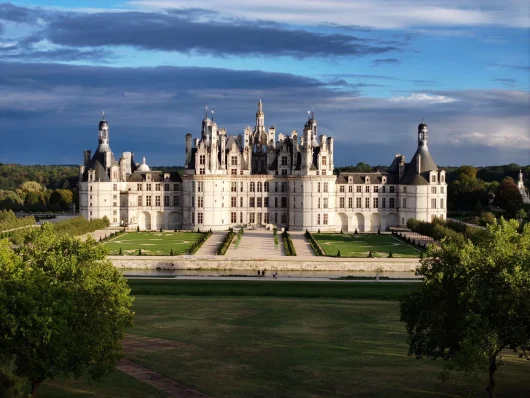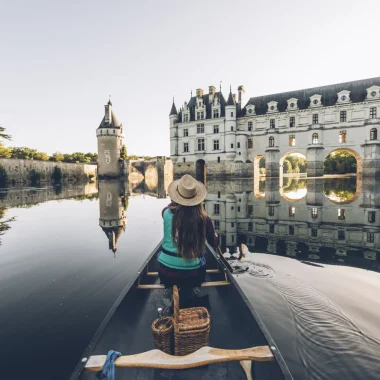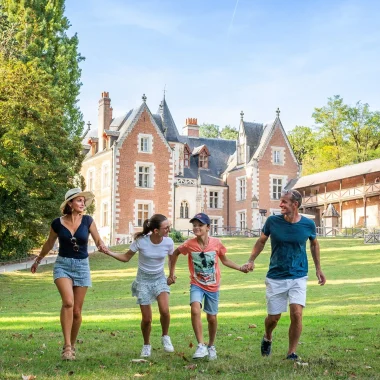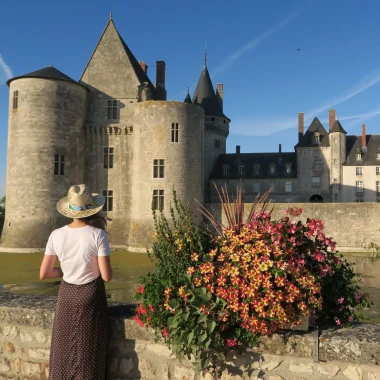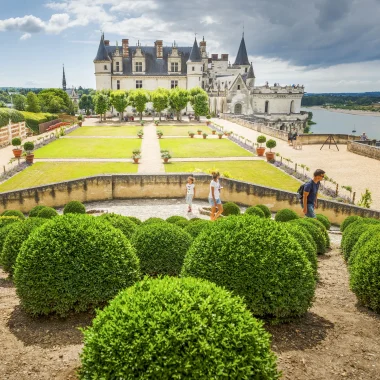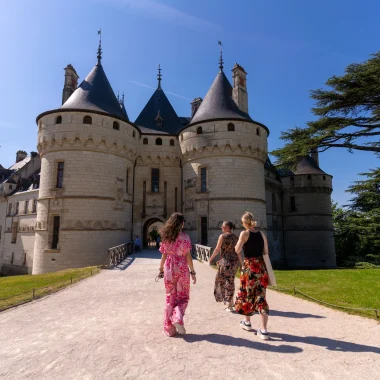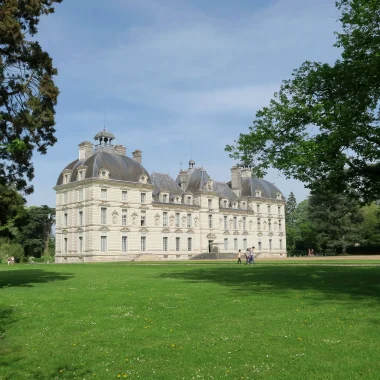Accueil Discover The Loire Châteaux The national Domain of Chambord
THE NATIONAL DOMAIN OF CHAMBORD: A RENAISSANCE GEM
An architectural masterpiece and monumental in every way, Chambord is the largest of all the Loire Valley châteaux. Nestling in the heart of the largest enclosed forest in France, this Renaissance jewel was the realisation of the extravagant dream of the young King Francis I. Admire the well-preserved and breathtaking architecture of the royal domain, stroll amid stunning plant life in the over-5-hectare park… Discover all the facets of this gem listed as UNESCO world heritage!
CHAMBORD: THE STORY OF A DREAM COME TRUE
PREPARE YOUR VISIT TO THE CHÂTEAU OF CHAMBORD WITH PEACE OF MIND
THE MOST INTRIGUING MUST-SEES AT THE CHÂTEAU OF CHAMBORD
French Wanderers
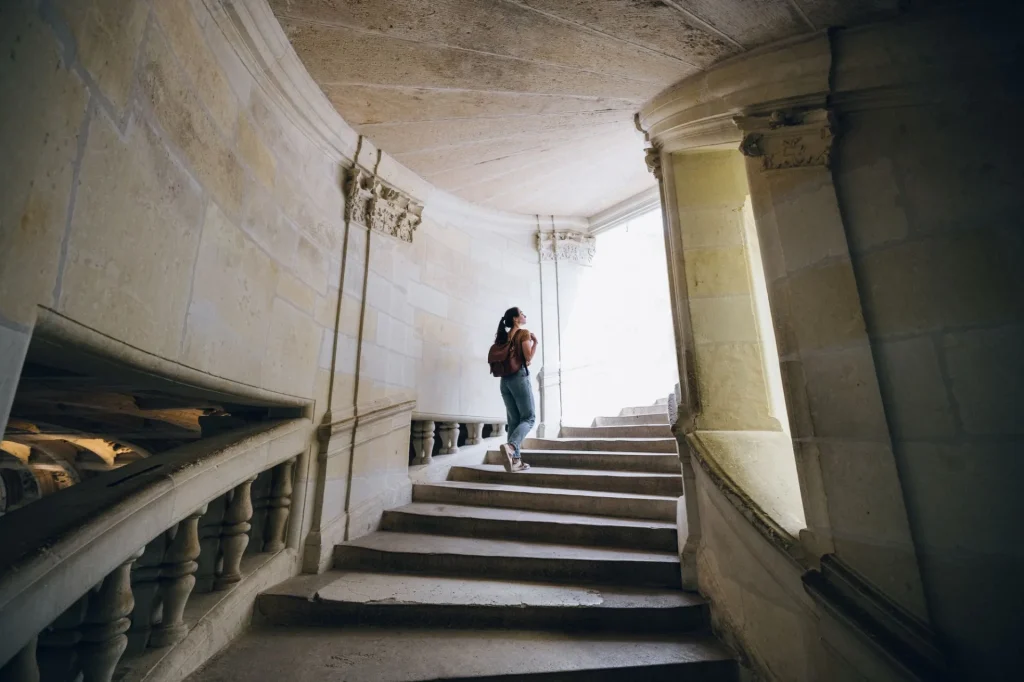
Without a doubt, the double-helix staircase! This majestic staircase is undeniably the masterpiece of the Château of Chambord. It leads to the Keep and is composed of two open stairways that families can go up or down at the same time without ever meeting! Give it a try: hilarity and entertainment are guaranteed! Make sure you also visit the terraces of the château, which offer a 360° view of the edge of the park of Chambord and are home to the building’s 282 magnificent chimneys.
Next, go to the Cross Room to admire the stunning vaults of Chambord, which are decorated with the emblems of Francis I: the “F”, the salamander and the knotted rope cord.
NOT TO BE MISSED: THE MAGNIFICENT GARDENS OF CHAMBORD
You can’t leave Chambord without visiting its gardens! Designed during the reign of Louis XIV and restored to their original layout in 2017, the spectacular French-style gardens of Chambord form a beautifully verdant backdrop to the château. Visit them at your leisure and admire no less than 600 trees, 800 shrubs, 200 rose bushes and over 15,000 different plants, as well as nearly 19,000m² of lawn! For a more bucolic walk, explore the winding alleys of the beautiful English-style garden with its soft and romantic vegetation.
Lastly, the château’s park is also home to remarkable kitchen gardens created as part of a large-scale project to observe nature at close hand and pay tribute to the legacy of food production of the historic domain’s old farms. It is fruit and vegetal heaven in the heart of Chambord!
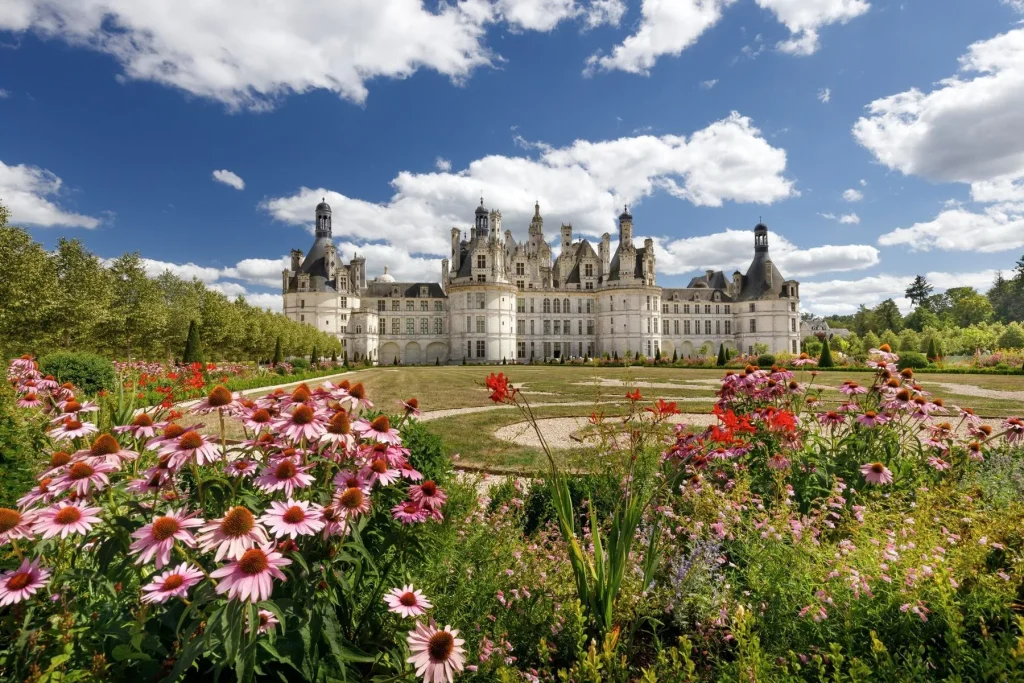
L. de Serres – Domaine National de Chambord
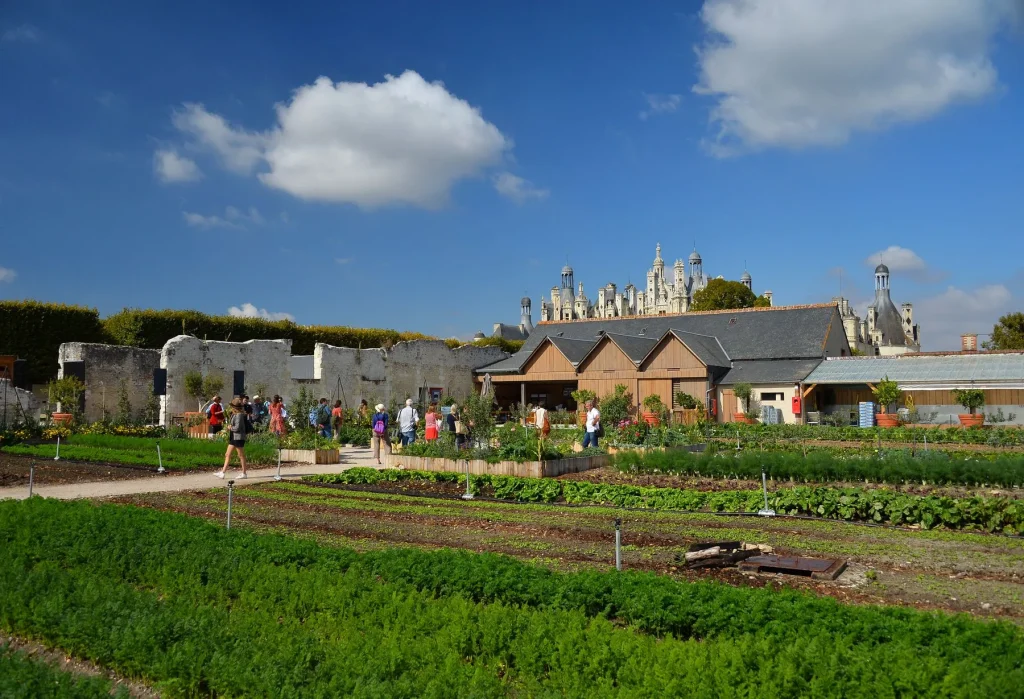
L. de Serres – Domaine National de Chambord
CHOOSE HOW YOU VISIT THE CHÂTEAU OF CHAMBORD
Guided or unaccompanied tours, in-depth or fun visits… Choose how you want to explore the Château of Chambord! In-depth visits are reserved for small groups and allow you to unravel all the mysteries of the château and visit it “from top to bottom”. You will even be granted special access to certain areas that are not open to other visitors! (Booking recommended.)
Fun children’s tours have also been created for families. Follow your guide from the past and immerse yourself in history as you embark on a journey through time! (Booking recommended.) The adventure continues at the Children’s Logis, where younger visitors can explore the history of Chambord through fun, interactive activities combining sensory discoveries, construction games and immersion in the world of Francis I. If you prefer to admire the château from the outside, take a fun and interactive guided tour of the kitchen garden!
French Wanderers
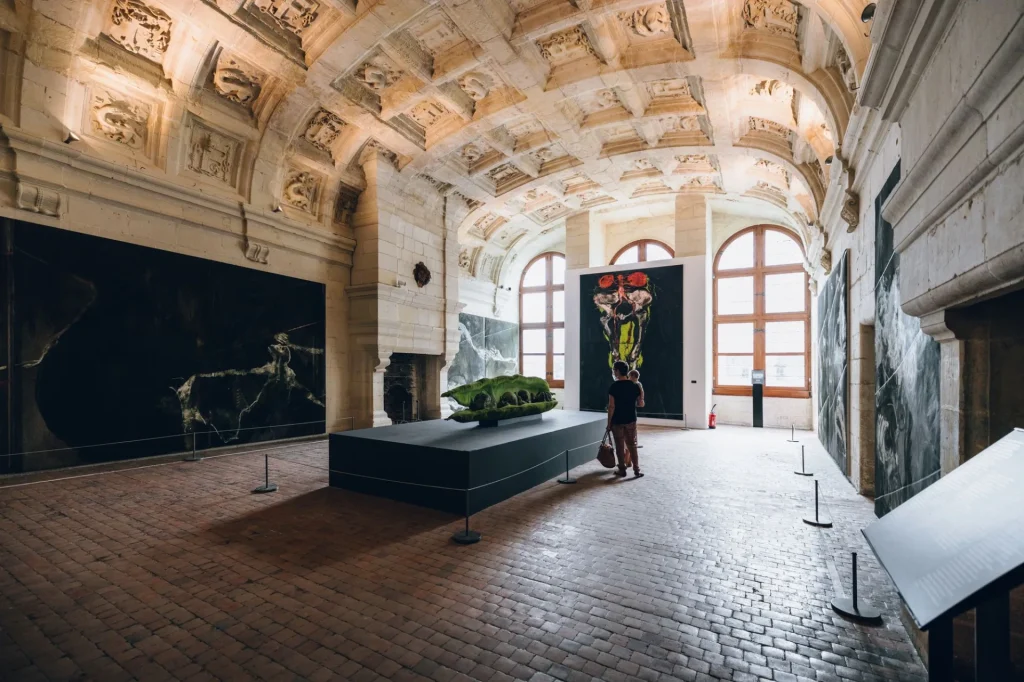
VISIT THE CHÂTEAU OF CHAMBORD IN A NEW WAY WITH A HISTOPAD
Pick up a HistoPad and explore the Château of Chambord during a unique and unforgettable experience! Using this 2.0 visitor guide, you can travel back in time and discover nine reconstructed rooms in the château using 3D technology and virtual reality. The HistoPad also includes interactive maps and a fun treasure hunt for children!
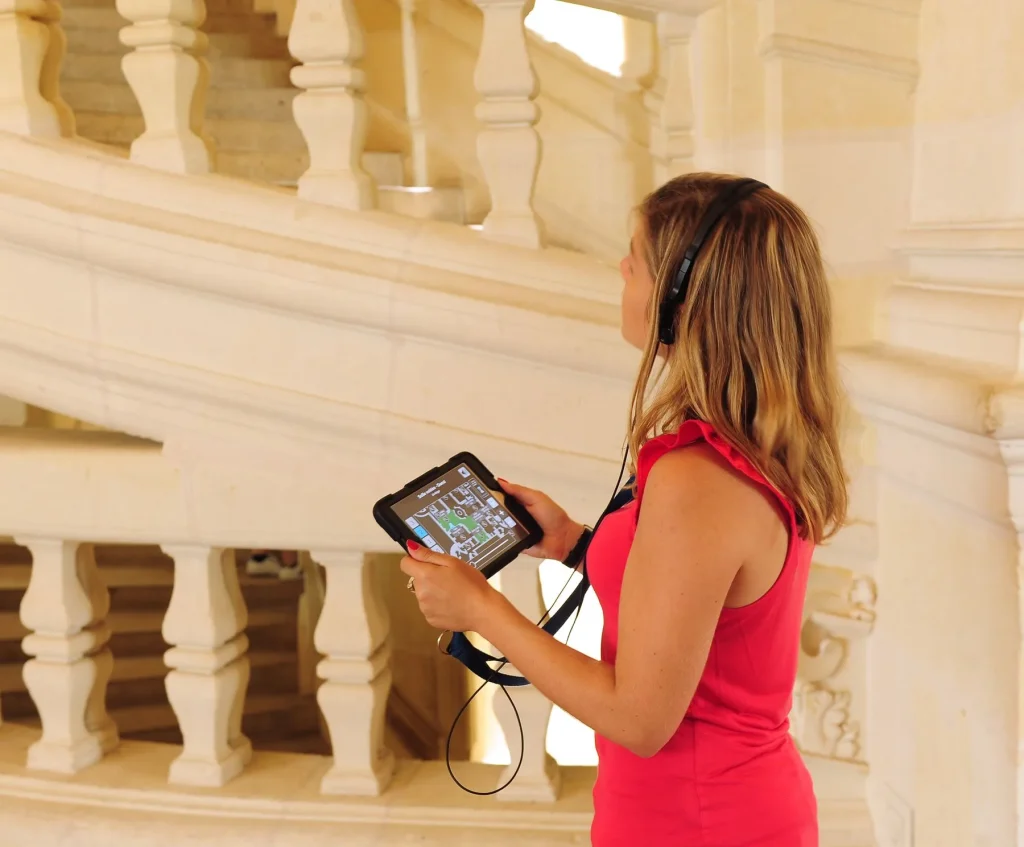
L. de Serres – Domaine National de Chambord
Activities to explore the NATIONAL DOMAIN OF CHAMBORD from every angle
M. Blond – CRT Centre-Val de Loire
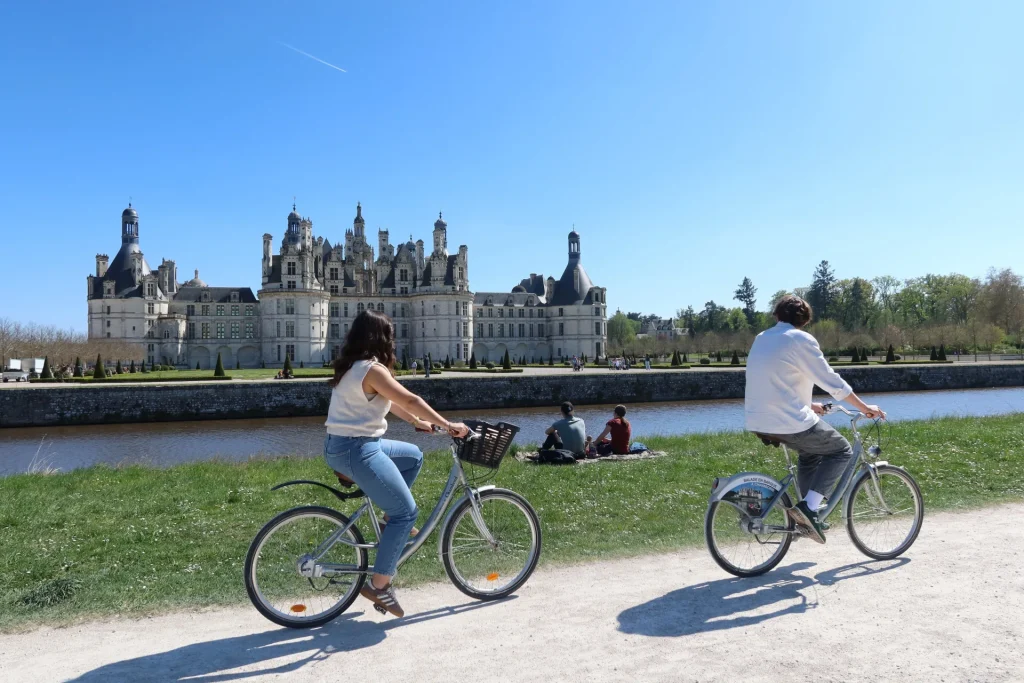
The National Domain of Chambord is also a life-size playground. Get moving, breathe, explore. And it all starts as soon as you hop on a bike or settle into a rosalie. Over 30 kilometres of trails (including 15 km in the castle grounds alone) open the doors to unspoilt nature. Here, every turn of the pedals brings you closer to a new view of the château, but the trails also wind through the forest. Cycle at your own pace, then stop to climb up to an observation point and try to spot the estate’s inhabitants: deer, wild boar and more. And for a refreshing break, head to the Cosson for a boat trip. This is your chance to admire the château from the water, in a peaceful atmosphere that is perfect for unwinding. In Chambord, you don’t just visit, you live the experience to the full. At your own pace, in your own way… and always with a touch of wonder.
The horse show: ‘Chambord, history on horseback’
Just a stone’s throw from the château, in the heart of Marshal Saxe’s stables, the equestrian show ‘Chambord, History on Horseback’, conceived and directed by Mario Luraschi, retraces five centuries of history. Stunts, high-level dressage and projections transport spectators back to the time of the château’s iconic figures, such as Francis I, Louis XIV and Molière. The immersion is total: period costumes, a set designed especially for Chambord and innovative visual effects plunge spectators into a living fresco. The horse, at the heart of each scene, becomes much more than a partner in the performance: it embodies the great stories and emotions of history.
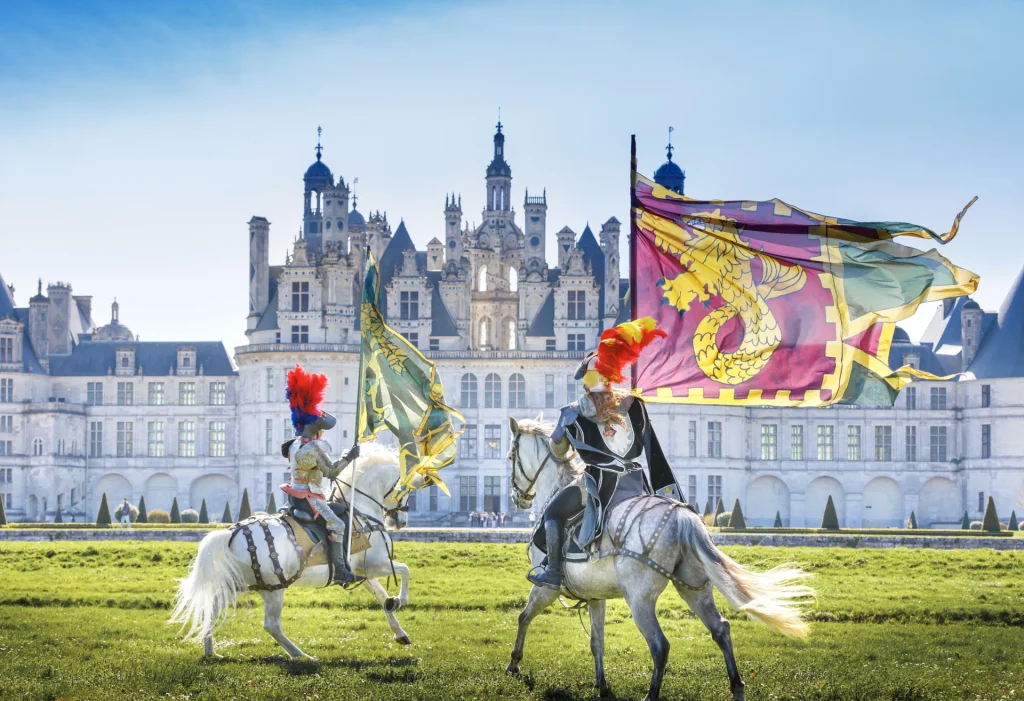
L. de Serres – Domaine National de Chambord
FAQ
How to get to the Château of Chambord?
The Château of Chambord is located 2 hours south of Paris and about 15 km from Blois.
By car, take the A10 motorway, exit Mer (no. 16) or Blois (no. 17); A85, exit Selles-sur-Cher (no. 13) and A71, exit Lamotte-Beuvron (no. 3).
By train, from Paris Austerlitz station, take a train to Blois-Chambord station. The journey takes about 1 hour 30 minutes. Once you arrive, shuttle buses or taxis will take you to the château.
Where can I park?
Paid parking is available in the immediate vicinity of the castle.
What activities are available for children?
The Château of Chambord offers a wide range of children’s activities. Why not take part in the hands-on “Introduction to Stone Carving” workshop? Or a family workshop? Children can also discover the château with Cassandra the Salamander using a puzzle booklet! Not forgetting the Children’s Logis, a play area entirely dedicated to them.
What is the best way to book a visit to the Château of Chambord?
Save time and prepare your visit to the Château of Chambord by booking your ticket via the link below!

